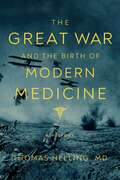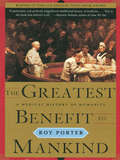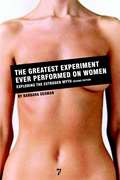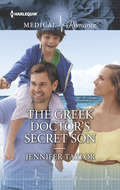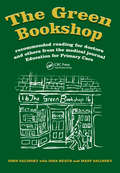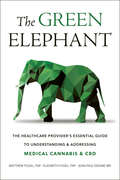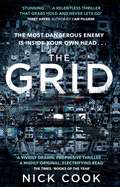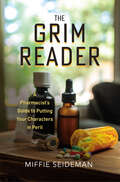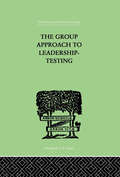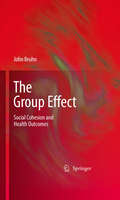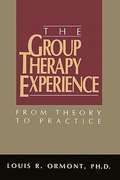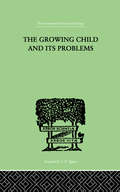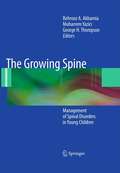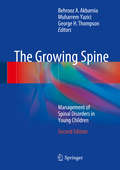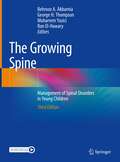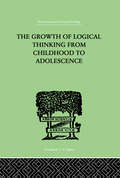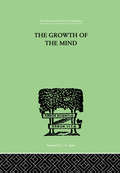- Table View
- List View
The Great Secret: The Classified World War Ii Disaster That Launched The War On Cancer
by Jennet ConantThe gripping story of a chemical weapons catastrophe, the cover-up, and how one American Army doctor’s discovery led to the development of the first drug to combat cancer, known today as chemotherapy. On the night of December 2, 1943, the Luftwaffe bombed a critical Allied port in Bari, Italy, sinking seventeen ships and killing over a thousand servicemen and hundreds of civilians. Caught in the surprise air raid was the John Harvey, an American Liberty ship carrying a top-secret cargo of 2,000 mustard bombs to be used in retaliation if the Germans resorted to gas warfare. When one young sailor after another began suddenly dying of mysterious symptoms, Lieutenant Colonel Stewart Alexander, a doctor and chemical weapons expert, was dispatched to investigate. He quickly diagnosed mustard gas exposure, but was overruled by British officials determined to cover up the presence of poison gas in the devastating naval disaster, which the press dubbed "little Pearl Harbor." Prime Minister Winston Churchill and General Dwight D. Eisenhower acted in concert to suppress the truth, insisting the censorship was necessitated by military security. Alexander defied British port officials and heroically persevered in his investigation. His final report on the Bari casualties was immediately classified, but not before his breakthrough observations about the toxic effects of mustard on white blood cells caught the attention of Colonel Cornelius P. Rhoads—a pioneering physician and research scientist as brilliant as he was arrogant and self-destructive—who recognized that the poison was both a killer and a cure, and ushered in a new era of cancer research led by the Sloan Kettering Institute. Meanwhile, the Bari incident remained cloaked in military secrecy, resulting in lost records, misinformation, and considerable confusion about how a deadly chemical weapon came to be tamed for medical use. Deeply researched and beautifully written, The Great Secret is the remarkable story of how horrific tragedy gave birth to medical triumph.
The Great Starvation Experiment: The Heroic Men Who Starved so That Millions Could Live
by Todd TuckerWhat does it feel like to starve? To feel your body cry out for nourishment, to think only of food? How many fitful, hungry nights must pass before dreams of home-cooked meals metastasize into nightmares of cannibalism? Why would anyone volunteer to find out? In The Great Starvation Experiment, historian Todd Tucker tells the harrowing story of thirty-six young men who willingly and bravely faced down profound, consuming hunger. As conscientious objectors during World War II, these men were eager to help in the war effort but restricted from combat by their pacifist beliefs. So, instead, they volunteered to become guinea pigs in one of the most unusual experiments in medical history -- one that required a year of systematic starvation. Dr. Ancel Keys was already famous for inventing the K ration when the War Department asked for his help with feeding the starving citizens of Europe and the Far East at the war's end. Fascists and Communists, it was feared, could gain a foothold in war-ravaged areas. "Starved people," Keys liked to say, "can't be taught Democracy." The government needed to know the best way to rehabilitate those people who had been severely underfed during the long war. To study rehabilitation, Keys first needed to create a pool of starving test subjects. Gathered in a cutting-edge lab underneath the football stadium at the University of Minnesota, Dr. Keys' test subjects forsook most food and were monitored constantly so that Dr. Keys and his scientists could study the effects of starvation on otherwise healthy people. While the weight loss of the men followed a neat mathematical curve, the psychological deterioration was less predictable. Some men drank quarts and quarts of water to fill their empty stomachs. One man chewed as many as forty packs of gum a day. One man mutilated himself to escape the experiment. Ultimately only four of the men were expelled from the experiment for cheating -- a testament to the volunteers' determination and toughness. To prevent atrocities of the kind committed by the Nazi doctors, international law now prevents this kind of experimentation on healthy people. But in this remarkable book, Todd Tucker captures a lost sliver of American history -- a time when cold scientific principles collided with living, breathing human beings. Tucker depicts the agony and endurance of a group of extraordinary men whose lives were altered not only for the year they participated in the experiment, but forever.
The Great Stink of Paris and the Nineteenth-Century Struggle against Filth and Germs
by David S. BarnesExplores the scientific and social factors that continue to influence the public's lingering uncertainty over how disease can—and cannot—be spread.Late in the summer of 1880, a wave of odors enveloped large portions of Paris. As the stench lingered, outraged residents feared that the foul air would breed an epidemic. Fifteen years later—when the City of Light was in the grips of another Great Stink—the public conversation about health and disease had changed dramatically. Parisians held their noses and protested, but this time few feared that the odors would spread disease. Historian David S. Barnes examines the birth of a new microbe-centered science of public health during the 1880s and 1890s, when the germ theory of disease burst into public consciousness. Tracing a series of developments in French science, medicine, politics, and culture, Barnes reveals how the science and practice of public health changed during the heyday of the Bacteriological Revolution.Despite its many innovations, however, the new science of germs did not entirely sweep away the older "sanitarian" view of public health. The longstanding conviction that disease could be traced to filthy people, places, and substances remained strong, even as it was translated into the language of bacteriology. Ultimately, the attitudes of physicians and the French public were shaped by political struggles between republicans and the clergy, by aggressive efforts to educate and "civilize" the peasantry, and by long-term shifts in the public's ability to tolerate the odor of bodily substances.
The Great Stink of Paris and the Nineteenth-Century Struggle against Filth and Germs
by David S. BarnesThe scientific and social history surrounding the 1880 incident of a foul odor in Paris and the development of public health culture that followed.Late in the summer of 1880, a wave of odors enveloped large portions of Paris. As the stench lingered, outraged residents feared that the foul air would breed an epidemic. Fifteen years later—when the City of Light was in the grips of another Great Stink—the public conversation about health and disease had changed dramatically. Parisians held their noses and protested, but this time few feared that the odors would spread disease.Historian David S. Barnes examines the birth of a new microbe-centered science of public health during the 1880s and 1890s, when the germ theory of disease burst into public consciousness. Tracing a series of developments in French science, medicine, politics, and culture, Barnes reveals how the science and practice of public health changed during the heyday of the Bacteriological Revolution.Despite its many innovations, however, the new science of germs did not entirely sweep away the older “sanitarian” view of public health. The longstanding conviction that disease could be traced to filthy people, places, and substances remained strong, even as it was translated into the language of bacteriology. Ultimately, the attitudes of physicians and the French public were shaped by political struggles between republicans and the clergy, by aggressive efforts to educate and “civilize” the peasantry, and by long-term shifts in the public’s ability to tolerate the odor of bodily substances.“A well-developed study in medically related social history, it tells an intriguing tale and prompts us to ask how our own cultural contexts affect our views and actions regarding environmental and infectious scourges here and now.” —New England Journal of Medicine“Both a captivating story and a sophisticated historical study. Kudos to Barnes for this valuable and insightful book that both physicians and historians will enjoy.” —Journal of the American Medical Association
The Great Transition
by Bruce CampbellIn the fourteenth century the Old World witnessed a series of profound and abrupt changes in the trajectory of long-established historical trends. Transcontinental networks of exchange fractured and an era of economic contraction and demographic decline dawned from which Latin Christendom would not begin to emerge until its voyages of discovery at the end of the fifteenth century. In a major new study of this 'Great Transition', Bruce Campbell assesses the contributions of commercial recession, war, climate change, and eruption of the Black Death to a far-reaching reversal of fortunes from which no part of Eurasia was spared. The book synthesises a wealth of new historical, palaeo-ecological and biological evidence, including estimates of national income, reconstructions of past climates, and genetic analysis of DNA extracted from the teeth of plague victims, to provide a fresh account of the creation, collapse and realignment of Western Europe's late medieval commercial economy.
The Great War and the Birth of Modern Medicine: A History
by Thomas HellingA startling narrative revealing the impressive medical and surgical advances that quickly developed as solutions to the horrors unleashed by World War I.The Great War of 1914-1918 burst on the European scene with a brutality to mankind not yet witnessed by the civilized world. Modern warfare was no longer the stuff of chivalry and honor; it was a mutilative, deadly, and humbling exercise to wipe out the very presence of humanity. Suddenly, thousands upon thousands of maimed, beaten, and bleeding men surged into aid stations and hospitals with injuries unimaginable in their scope and destruction. Doctors scrambled to find some way to salvage not only life but limb. The Great War and the Birth of Modern Medicine provides a startling and graphic account of the efforts of teams of doctors and researchers to quickly develop medical and surgical solutions. Those problems of gas gangrene, hemorrhagic shock, gas poisoning, brain trauma, facial disfigurement, broken bones, and broken spirits flooded hospital beds, stressing caregivers and prompting medical innovations that would last far beyond the Armistice of 1918 and would eventually provide the backbone of modern medical therapy. Thomas Helling&’s description of events that shaped refinements of medical care is a riveting account of the ingenuity and resourcefulness of men and women to deter the total destruction of the human body and human mind. His tales of surgical daring, industrial collaboration, scientific discovery, and utter compassion provide an understanding of the horror that laid a foundation for the medical wonders of today. The marvels of resuscitation, blood transfusion, brain surgery, X-rays, and bone setting all had their beginnings on the battlefields of France. The influenza contagion in 1918 was an ominous forerunner of the frightening pandemic of 2020-2021. For anyone curious about the true terrors of war and the miracles of modern medicine, this is a must read.
The Greatest Benefit to Mankind: A Medical History of Humanity (The Norton History of Science)
by Roy Porter"To combine enormous knowledge with a delightful style and a highly idiosyncratic point of view is Roy Porter's special gift, and it makes [this] book . . . alive and fascinating and provocative on every page."--Oliver Sacks, M.D. Hailed as "a remarkable achievement" (Boston Sunday Globe) and as "a triumph: simultaneously entertaining and instructive, witty and thought-provoking . . . a splendid and thoroughly engrossing book" (Los Angeles Times), Roy Porter's charting of the history of medicine affords us an opportunity as never before to assess its culture and science and its costs and benefits to mankind. Porter explores medicine's evolution against the backdrop of the wider religious, scientific, philosophical, and political beliefs of the culture in which it develops, covering ground from the diseases of the hunter-gatherers to today's threat of AIDS and ebola, from the clearly defined conviction of the Hippocratic oath to the muddy ethical dilemmas of modern-day medicine. Offering up a treasure trove of historical surprises along the way, this book "has instantly become the standard single-volume work in its field" (The Lancet). "The author's perceptiveness is, as usual, scalpel-sharp; his manner genially bedside; his erudition invigorating." - Simon Schama
The Greatest Experiment Ever Performed on Women: Exploding the Estrogen Myth
by Barbara SeamanWith the ardent tone of a close friend, Barbara Seaman draws on forty years of journalistic research to expose the "menopause industry" and shows how estrogen therapy often causes more problems--including breast cancer, heart attack, and stroke--than it cures. The Greatest Experiment Ever Performed on Women tracks the well-intentioned discovery of synthetic estrogen through the unconscionable and misleading promotion of a dangerous drug.
The Greek Doctor's Secret Son
by Jennifer TaylorFinding his son...and his bride? When nurse Amy Prentice takes her son to the island of Constantis to show him his Greek heritage, the last person she expects to see is Dr. Nico Leonides-the man who broke her heart...and Jacob's dad! But there's no denying that Nico, as he gets to know Jacob, proves to be a remarkable father. And as he bonds with Amy over their son, the love they once shared resurfaces. Now can Nico find the courage to share his own secret...and finally make them a real family?
The Green Bookshop: Recommended Reading for Doctors and Others from the Medical Journal Education for Primary Care (Radcliffe Ser.)
by Iona Heath Matthew Walters John SalinskyThe collection includes: *
The Green Elephant: The Healthcare Provider's Essential Guide to Understanding and Addressing Medical Cannabis and CBD
by Matthew Fogel Elizabeth Fogel Jean-Paul DedamThe Ultimate Resource for Cannabis-Based Therapy Backed by extensive research and medical expertise, The Green Elephant is the all-in-one guidebook for healthcare professionals looking to educate themselves on cannabis therapy to better provide guidance to their patients. Delving into the history, biology, chemistry, and pharmacological effects of cannabis and CBD-based therapy, The Green Elephant also explores the equally important areas of ethics in practice, cannabis&’ legal history, and current regulatory status — all to enable healthcare professionals to better serve their patients.The Green Elephant provides healthcare professionals with much-needed information on dosing instructions, potential drug interactions, long- and shortterm treatment plans, and much more. Cannabis therapy has the exciting potential to help millions of patients better manage their symptoms and enjoy a higher quality of life. The time has come for all healthcare professionals to discuss this green &“elephant in the room.&”
The Green Pharmacy: New Discoveries In Herbal Remedies For Common Diseases And Conditions From The World's Foremost Authority On Healing Herbs
by James A. DukeMany diseased and conditions for which we turn to modern medicine can also be treated naturally with healing herbs, medicinal food, other natural remedies--and these treatments can be safer, less expensive and possibly even more effective than traditional methods. Let Dr. James Duke, the world's leading authority on healing herbs, leads you through the vast world of natural remedies--from Anise for Asthma to Violet for Varicose Veins, and everything in between. With just a few trips to the health-food store, the supermarket, or your own backyard--and with the help of Dr. Duke--you'll have everything you need to create your own Natural Medicine Cabinet.
The Grid: 'A stunning thriller’ Terry Hayes, author of I AM PILGRIM
by Nick Cook'A highly original, electrifying read' The Times'A stylish, riveting thriller' Daily Mail'An assured page-turner ... it combines action and foreign locations with big ideas a la Dan Brown' Sunday TimesThe US President Thompson has been dreaming of his own death. A repeating nightmare that hounds him night after night that he can't ignore: something tells him it's not just a dream, it feels too real.Thompson's doctor, military psychiatrist Josh Cain, is summoned to a church tower near the White House. He thinks he is there to talk down another suicidal ex-Marine. But the man he finds tells him of a plot to kill Thompson, revealing secrets he can't possibly have known - just seconds before a sniper's bullet takes him out . . .Battles have been fought man to man, then machine to machine, and even in cyberspace. But now there is a different battlefield emerging: human consciousness and the fight for our minds.What readers are saying:'A classy, intelligent and reflective investigative thriller.''A layered plot, engaging characters and a spine chilling ring of truth to the plot, which lured me in and kept me trapped until the final page.''A real page turner with plenty of surprises and twists. Great read.''THE BEST BOOK THAT I'VE READ ALL YEAR!'
The Grieving Body: How the Stress of Loss Can Be an Opportunity for Healing
by Mary-Frances O'ConnorThe follow-up to celebrated grief expert, neuroscientist, and psychologist Dr. Mary-Frances O’Connor’s The Grieving Brain focuses on the impact of grief—and life’s other major stressors—on the human body. Coping with death and grief is one of the most painful human experiences. While we can speak to the psychological and emotional ramifications of loss and sorrow, we often overlook its impact on our physical bodies. Dr. Mary-Frances O’Connor specializes in the study of grief, and in The Grieving Body she shares vital scientific research, revealing imperative new insights on its profound physiological impact. As she did in The Grieving Brain, O’Connor combines illuminating studies and personal stories to explore the toll loss takes on our cardiovascular, endocrine, and immune systems and the larger implications for our long-term well-being.The Grieving Body addresses questions about how bereavement affects us, such as:Can we die of a broken heart?What happens in our bodies when we’re grieving?How do our coping behaviors affect our physical health?What is the cognitive impact of grief?Why are we more prone to illness during times of enormous stress?and moreResearch-backed, warm, and empathetic, The Grieving Body is an essential, hopeful read for those experiencing loss as well as their supportive friends and family.The Grieving Body is illustrated with black-and-white charts and graphs.
The Grim Reader: A Pharmacist's Guide to Putting Your Characters in Peril
by Miffie SeidemanMany authors draw from headlines or movies rather than personal experience to write drug-related scenes, and the result may be more fiction than fact. So, how can you craft a convincing scene involving accidental use of fentanyl-tainted pot or a murder attempt with grandma's pain pills?A much-needed resource, The Grim Reader details how to write medical scenarios that result in realistic page-turners. As drug inaccuracies multiply in screenplays, scripts, novels, and audio plays, Dr. Miffie Seideman, Pharm.D. provides writers (and editors) with the background and authenticity necessary to develop plausible plotlines, including: • Pertinent drug facts, tips, and symptoms • Symptom timelines • Tips for developing historically accurate scenes • Common street drug names and slang • Sample scenarios to demonstrate how to weave the information into a believable scene • Writing prompts to provide scene starters and offer practice Combining Seideman's pharmacology knowledge with her love for creative writing, The Grim Reader is the ultimate guide to help authors craft accurate drug scenes and avoid medical mistakes.
The Group Approach To Leadership-Testing
by Harris, HenryFirst Published in 1999. Routledge is an imprint of Taylor & Francis, an informa company.
The Group Effect
by John BruhnSociologists and anthropologists have had a long interest in studying the ways in which cultures shaped different patterns of health, disease, and mortality. Social scientists have documented low rates of chronic disease and disability in non-Western societies and have suggested that social stability, cultural homogeneity and social cohesion may play a part in explaining these low rates. On the other hand, in studies of Western societies, social scientists have found that disease and mortality assume different patterns among various ethnic, cultural and social-economic groups. The role of stress, social change and a low degree of cohesion have been suggested, along with other factors as contributing to the variable rates among different social groups. Social cohesion has been implicated in the cause and recovery from both physical and psychological illnesses. Although there has been a large amount of work established the beneficial effects of cohesion on health and well-being, relatively little work has focused on HOW increased social cohesion sustains or improves health. This work is based on the premise that there are risk factors, including social cohesion that regulate health and disease in groups. One of the challenges is how to measure social cohesion - it can be readily observed and experienced but difficult to quantify. A better understanding of how social cohesion works will be valuable to improving group-level interventions.
The Group Therapy Experience From Theory To Practice
by Louis OrmontIn this definitive work, internationally renowned group therapist Dr. Louis Ormont sets down the techniques and innovations that give the group experience its unique therapeutic power. From Theory to Practice, Dr. Ormont discusses techniques such as those of identifying people's problems, dealing with resistances, helping members confirm new identities, and termination itself.
The Growing Child And Its Problems (International Library Of Psychology Ser. #Vol. 79)
by Miller, EmanuelFirst Published in 1999. Routledge is an imprint of Taylor & Francis, an informa company.
The Growing Spine
by Muharrem Yazici George H. Thompson Behrooz A. AkbarniaSpinal disorders in very young children may be caused by a variety of conditions. The treatment of such conditions is often challenging due to the age of the patient and the progressive nature of the deformity. There also may be associated problems such as congenital anomalies, respiratory insufficiency, and neurological problems. Depending on the etiology of the deformity, these children are often cared for by multiple specialists including pediatricians, pediatric orthopaedists or orthopaedic spine surgeons, neurologists, pediatric surgeons, pediatric neurosurgeons, oncologists, and/or pulmonologists. Health professionals in all of the mentioned disciplines are involved in the management of these patients, which is why compiling a comprehensive textbook that is not limited to orthopedic specialists is essential. This textbook will effectively help to standardize the care of these patients. Furthermore, other professionals such as nurses, physical therapists and healthcare professionals in training are usually not familiar with these conditions and are in need of a reference book to consult when caring for children with spinal deformities.
The Growing Spine, 2nd Edition
by Muharrem Yazici George H. Thompson Behrooz A. AkbarniaThe second edition of The Growing Spine has been extensively revised to cover recent advances in knowledge and management. The book is intended as a comprehensive, one-stop reference for specialists and health professionals who care for young children with spinal deformities. In addition, it will effectively help to standardize the care of these patients. Depending on the etiology, children with spinal deformities are often cared for by multiple specialists, including pediatricians, pediatric orthopaedists or orthopaedic spine surgeons, neurologists, pediatric surgeons, pediatric neurosurgeons, oncologists, and pulmonologists. The multidisciplinary nature of care is reflected in The Growing Spine, which will be of value for all involved practitioners rather than just orthopaedic specialists. It will also be an ideal reference for nurses, physical therapists, and healthcare professionals in training, who are usually unfamiliar with spinal deformities in children.
The Growing Spine: Management of Spinal Disorders in Young Children
by Muharrem Yazici George H. Thompson Behrooz A. Akbarnia Ron El-HawaryThere has been significant progress in the field of spinal disorders in very young children over the past two decades. However, the treatment of such conditions remains challenging due to the age of the patient, different etiologies, associated morbidities and the progressive nature of the deformity. Depending on the etiology of the deformity, these children are often cared for by multiple specialists including pediatricians, pulmonologists, pediatric orthopedists or orthopedic spine surgeons, pediatric surgeons, pediatric neurosurgeons, neurologists and oncologists. Health professionals in all of the mentioned disciplines are involved in the management of these patients, which is why compiling a comprehensive text that is not limited to orthopedic specialists is essential. Since the second edition of this book was published, there has been a significant body of literature that has been published and advances made in the care of young children with spinal and thoracic deformities. This new edition will effectively help to standardize the care of these patients. Furthermore, other professionals, such as nurses, physical therapists and healthcare professionals in training, are usually not familiar with these conditions and are in need of a reference book to consult when caring for young children with spinal deformities. Sections are arranged thematically and comprise a comprehensive presentation of the current knowledge on disorders of the growing spine. After opening sections discussing general considerations and patient evaluation and diagnosis, subsequent sections describe the various categories of spinal deformity - idiopathic, congenital, neuromuscular, syndromic, and others - followed by surgical and non-surgical management strategies, both traditional and growth-friendly. Concluding sections address patient care and outcomes and outline future directions for research and practice.
The Growth Of Logical Thinking From Childhood To Adolescence: AN ESSAY ON THE CONSTRUCTION OF FORMAL OPERATIONAL STRUCTURES (International Library Of Psychology Ser.)
by Piaget, Jean & Inhelder, BrbelThis is Volume XXII of thirty-two on a series of Developmental Psychology. Originally published in 1958, this text offers a translation from French of an essay on the construction of formal operational structures to explain part of the growth of logic in a child's brain and development. It looks at propositional logic, the integration of formal thought and the operational schemata of formal logic.
The Growth Of Reason: A STUDY OF the Role of Verbal Activity in the Growth of the (International Library Of Psychology Ser.)
by Lorimer, FrankFirst Published in 1999. Routledge is an imprint of Taylor & Francis, an informa company.
The Growth of the Mind: An Introduction to Child-Psychology (International Library Of Psychology Ser.)
by K. KoffkaFirst Published in 1999. Routledge is an imprint of Taylor & Francis, an informa company.




